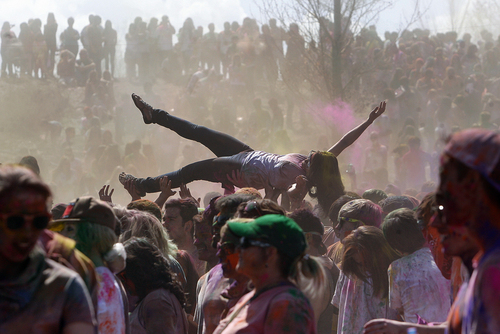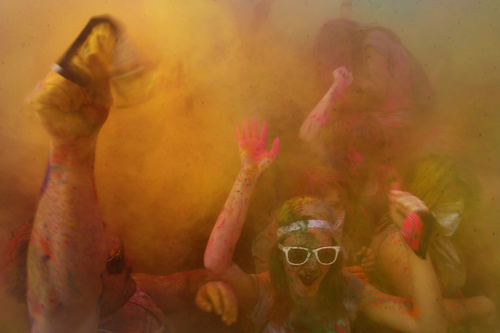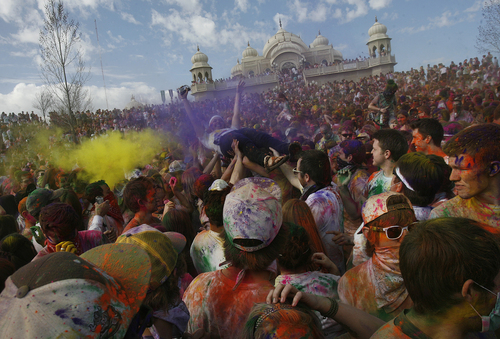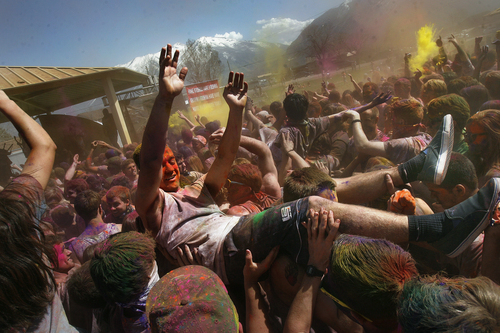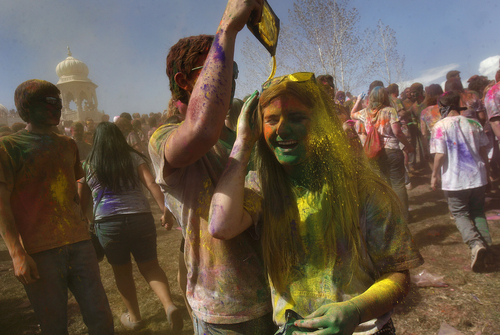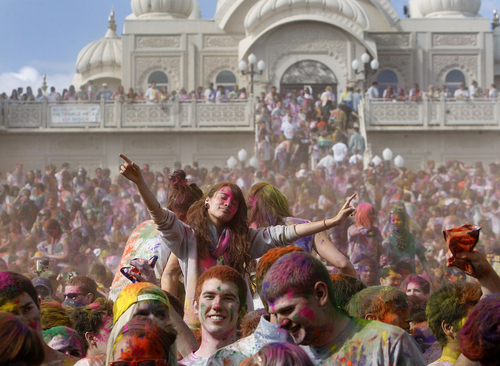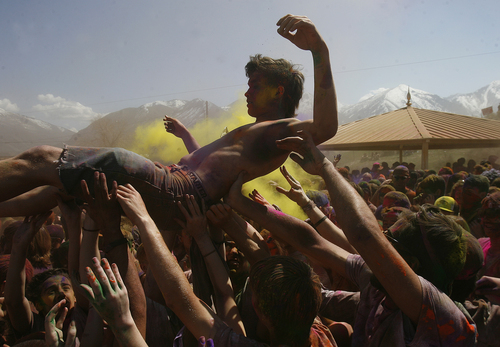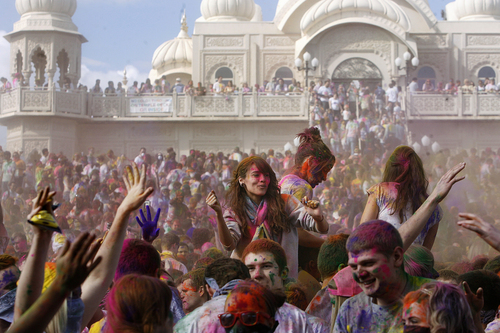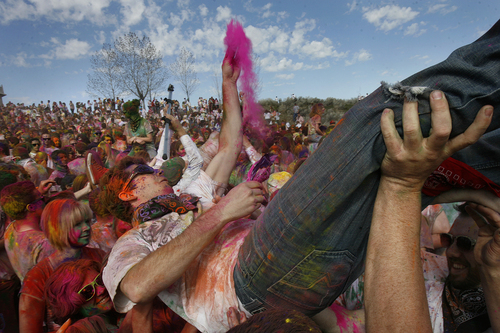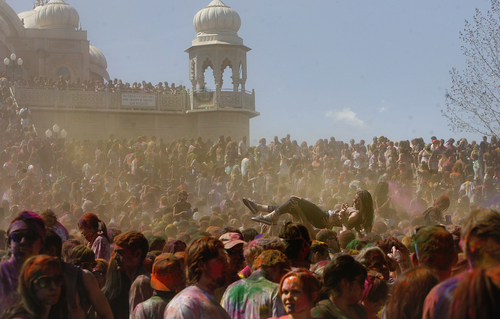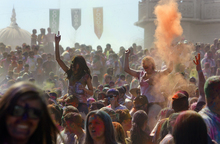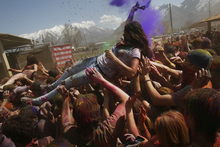This is an archived article that was published on sltrib.com in 2014, and information in the article may be outdated. It is provided only for personal research purposes and may not be reprinted.
With only six participants at the first annual Holi Festival at the Sri Sri Radha Krishna Temple in Spanish Fork, Mormons outnumbered Hindus — 4 to 2.
In the past 25 years, that ratio has widened exponentially.
At next week's festival — the largest of its kind in the U.S. — Caru Das, the temple's priest, expects up to 70,000 revelers, most of whom will be students from LDS Church-owned Brigham Young University in nearby Provo.
"It's an opportunity for young LDS kids to come and celebrate their spirituality," Das says, "without alcohol or drugs."
The two-day event, which Das dubbed the "Festival of Colors," derives from an ancient Hindu tradition, celebrating the end of winter and the triumph of good over evil. It is common in southern India for friends and neighbors to gather in small groups around a bonfire and throw colored corn starch in the air.
For his Utah version, Das added "kirtan," which in Saskrit means "to glorify or spread the name and fame of God's love," he says.
Those lyrics can be used in any form, including techno, soul and rock. He set the date at the last weekend in March and invited the entire community to make merry together.
Now, even the priest acknowledges the show he created is more like a rock concert than a religious exercise. After all, it features daylong performances by live bands, plus yoga demonstrations and dance numbers.
Every hour is punctuated with a 10-second countdown and then the tossing of colored corn starch in the air and on audience members. Before long, participants are covered in colors and nearly indistinguishable from one another.
"The throw did not originate in India," Das says in a video posted on the temple's website. "Spraying is a metaphor for rejuvenation or renewal, to leave aside the past, to move with a great positive vision into the future."
So live music, clean (if colorful) fun, a spiritual undercurrent and no drugs or booze — all for a $3 entry fee. It's not surprising to see Mormons embrace this Hindu celebration.
"I went with some friends; it was a lot of fun," says Sandy's Haylee Buchanan, who is studying human development at BYU. "To me, it was just some big party."
Buchanan enjoyed "being immersed in something so completely different" than her own Mormon faith, and she respected those for whom the playful event was sacred.
"I wish that I could have read information on why and what they are celebrating," she says, "because it was fascinating."
The Mormon partygoers' ignorance of Hinduism bothered Sonal Yadav a bit.
Yadav, a Hindu reared in New Delhi, moved to Utah to pursue a master's degree in business administration at BYU, according to a Religion News Service story.
Yadav relished the Spanish Fork Holi Festival, but, the story notes, believed that "some of the religious elements of the holiday seem to get lost in translation."
The young Mormons happily chanted "Hare Rama, Hare Krishna," the god the festival celebrates, but the Hindu student says she would be "surprised if those youngsters really knew what the festival was all about."
These kinds of borrowings don't trouble Indra Neelameggham, a Hindu who worships at the Sri Ganesha Temple in South Jordan.
"This festival has no religious significance. There are no prayers or no special services connected with it," she says. "It has evolved in India — particularly in the south — over the years and now is mostly about tourism and marketing — like Christmas or Halloween."
Das does sense spirituality in it, but of a more universal nature.
"We consider that when you chant the name of God, God is personally present," he says. "Even a person who comes for the first time with a less-than-serious attitude is likely to feel something they just don't feel in other areas."
As for the Mormon invasion of a Hindu festival, Das doesn't see the LDS hordes as party crashers. They're welcome as are all others. The celebration breaks down barriers between strangers and unites color throwers in a common experience.
If you want to get biblical about it, Das says, the festival promotes the two most important Christian concepts: loving God and your fellow men.
What, he wonders, could be more religious than that?
Twitter: @religiongal —
Holi Festival of Colors
What • Holi Festival of Colors
When • Saturday, March 29, 10 a.m. to 7 p.m.; Sunday, March 30, 11 a.m. to 4 p.m.
Where • Sr Sri Radha Krishna Temple, 311 W. 8500 South, Spanish Fork
How much • $3
More information • http://www.festivalofcolorsusa.com/when-where/spanish-fork/


